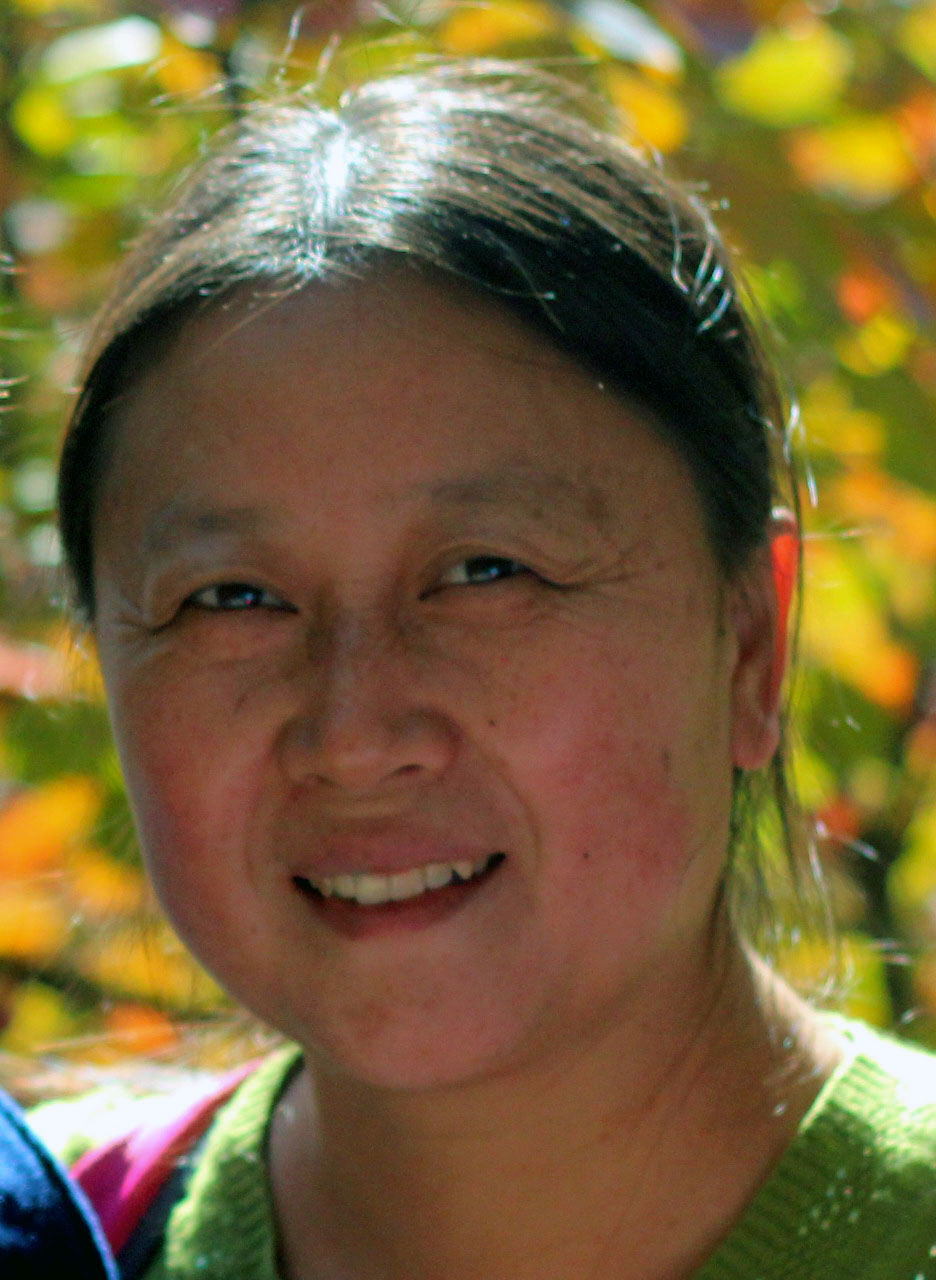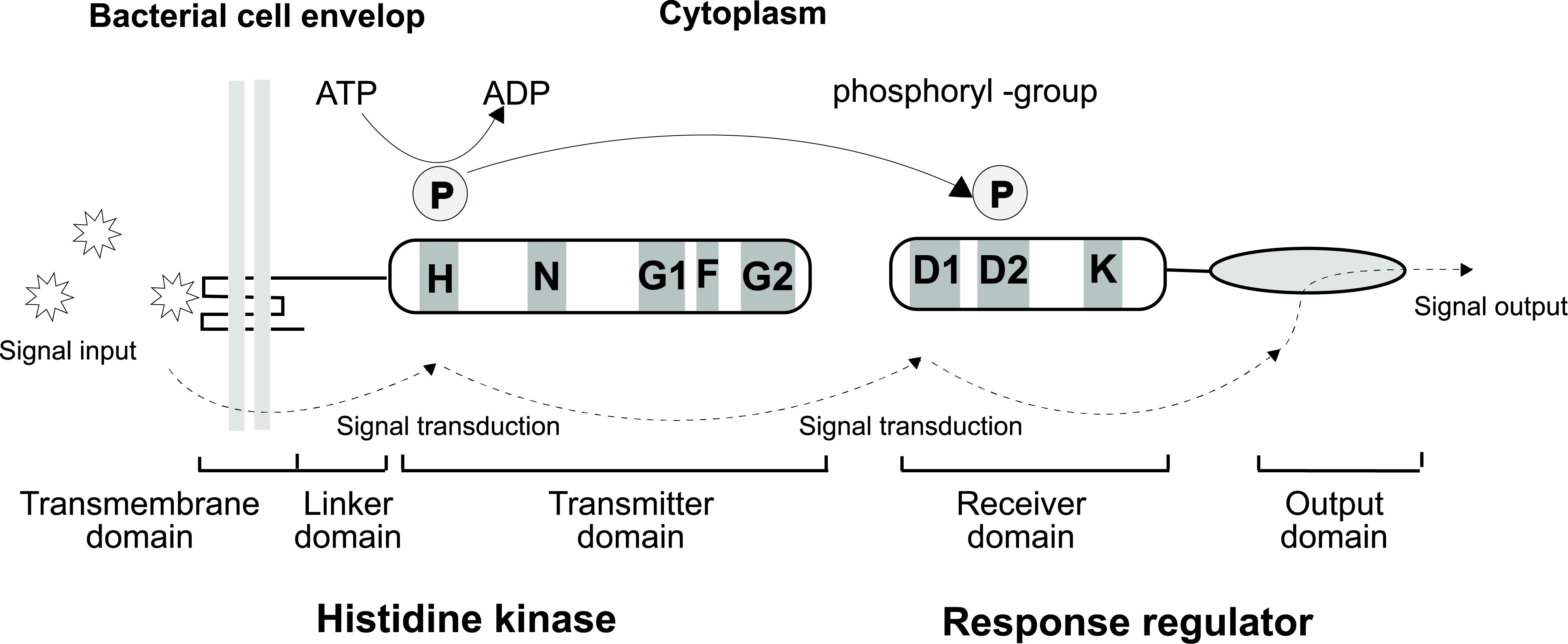研究组长 
钱韦 研究员,所长
国家杰出青年科学基金项目资助
电话:010-64806063
电子邮件:qianw#im.ac.cn(请将#换为@)
通讯地址:北京市朝阳区北辰西路1号院3号中科院微生物所
邮编:100101
学习经历
1997-2000 中科院植物研究所,系统进化植物学国家重点实验室,植物学专业,博士
1994-1997 云南大学,生态学与地植物学研究所,生态学专业,硕士
1990-1994 云南大学,生物系,植物学专业,学士 工作经历
2018-目前 中科院微生物所,副所长
2011-目前 中科院微生物所,植物基因组学国家重点实验室,副主任
2010-目前 中科院微生物所,“植物病原细菌致病分子机制”创新研究组,PI
2006-2019 中科院微生物所,农业微生物与生物技术研究室,副主任兼学术秘书
2008-目前 中科院微生物所,植物基因组学国家重点实验室,研究员
2003-2008 中科院微生物所,植物基因组学国家重点实验室,副研究员
2003-2003 中科院微生物所,植物基因组学国家重点实验室,助理研究员
2000-2003 中科院微生物所,植物基因组学国家重点实验室,博士后 获奖情况
2016 中科院微生物研究所,“所长奖教金”优秀奖
2008 中国科学院首届“卢嘉锡青年人才奖”
2000 中国科学院“王宽诚博士后工作奖励基金”
2000 中国科学院“地奥奖学金”一等奖
1997 云南大学首届“伍达观奖学金” 学术服务
2018-目前 Applied and Environmental Microbiology, Editor
2012-目前 中国植物生理学与分子生物学学会,植物-微生物互作专业委员会,副主任
2014-目前 中国植物病理学会,第十、十一届理事会,理事,常务理事
2018-目前 中国昆虫学会,比较免疫与生物互作专业委员会,委员
2013-目前 微生物所第九届学术委员会,委员
2014-目前 微生物所条件技术委员会,副主任
2015-目前 植物病理学报,编委
2017-目前 生物工程学报,编委
2018-目前 Phytopathology Research, Associate Editor
2015-目前 Frontiers in Plant-Microbe Interactions, Review Editor
2016-目前 全国专业标准化技术委员会,委员
2012-2015 “中国科学院青年创新促进会”会员
研究团队  王莉 博士 副研究员
Dr. Li Wang | 
王芳芳 博士 副研究员
Dr. Fang-Fang Wang |  邓超颖 博士 助研
Dr. Chao-Ying Deng | 
王军 总管
Ms. Jun Wang |
在站博士后
尹 昕 博士
程寿廷 博士 在读研究生
袁智惠 (博士研究生),2017年伊品奖学金,2018年“三好学生”标兵
田绣琦 (硕博连读研究生)
任宝珍 (直博生)
丁莉莉 (直博生)
魏金伟(硕士研究生)
张宏宇(硕士研究生)
孟繁凡(硕士研究生)
姜馨琪 (硕士研究生)
在读客座研究生
李雅君 硕士研究生 北京林业大学,林学院

已毕业/离室成员(目前工作单位,在读期间获重要奖项)
张 焕 博士 研究生国家奖学金
潘 越 博士 浙江大学,诺维信奖学金,微生物所所长奖学金
蔡 珍 博士 清华大学,中科院院长奖学金优秀奖,微生物所所长奖学金,伊品奖学金
彭宝玉 博士 中科院武汉病毒所
程寿廷 博士 中科院遗传与发育生物学研究所
邓超颖 博士 中科院微生物所,中科院地奥奖学金,研究生国家奖学金
袁智惠 硕士 中科院微生物所
王芳芳 博士,中科院微生物所,中科院李月华优秀博士生奖学金,研究生国家奖学金
已毕业/离室客座成员
杨若兰 客座硕士研究生 北京林业大学,林学院
柳 威 客座硕士研究生 上海交通大学,药学院
郑 柳 客座硕士研究生,上海交通大学,药学院
徐会永 客座博士研究生,南京农业大学,植物保护学院
蔡璐璐 客座博士研究生,上海交通大学,农业与生物技术学院
陈家兴 客座硕士研究生,北京大学,医学部
周 佳 客座本科毕业生,四川大学,生命科学学院
康秀敏 客座硕士研究生 北京理工大学,化工与环境学院
王 婷 本科实习生,科研助理。北京城市学院
周玉洁 客座博士研究生,哈尔滨医科大学
夏卜贤 客座硕士研究生,天津农学院
王晓征 本科实习生,首都师范大学
丁维晰 本科实习生,首都师范大学 
| 科研成果与进展 # 并列第一作者; 通讯作者 通讯作者 Cheng ST, Qian W .2018.c-di-GMP-histidine kinase binding broadens phosphtransfer fulx to enhance the specificity of two-component signalling that controls bacterial swimming. Submitted. .2018.c-di-GMP-histidine kinase binding broadens phosphtransfer fulx to enhance the specificity of two-component signalling that controls bacterial swimming. Submitted. Deng CY#, Zhang H#, Wu Y, Ding LL, Pan Y, Sun ST, Wu Y, Li YJ, Wang L, Qian W . 2018. Proteolysis of histidine kinase VgrS inhibits its autophosphorylation and promotes osmostress resistance in Xanthomonas campestris. Nature Communications. 9:4791.[Link] . 2018. Proteolysis of histidine kinase VgrS inhibits its autophosphorylation and promotes osmostress resistance in Xanthomonas campestris. Nature Communications. 9:4791.[Link] Wang FF, Qian W . 2018. The roles of histidine kinases in sensing host plants and cell-cell communication signals in a phytopathogenic bacterium. Philosophical Transactions of the Royal Society B: Biological Sciences. 374:20180311.[Link] . 2018. The roles of histidine kinases in sensing host plants and cell-cell communication signals in a phytopathogenic bacterium. Philosophical Transactions of the Royal Society B: Biological Sciences. 374:20180311.[Link] Yang RL#, Deng CY#, Wei JW, He W, Li AN , Qian W , Qian W . 2018. A large-scale mutational analysis of two-component signaling system of Lonsdalea quercina revealed that KdpD-KdpE regulates bacterial virulence against host poplar trees. Molecular Plant-Microbe Interactions. 31:724-736. [Link ] . 2018. A large-scale mutational analysis of two-component signaling system of Lonsdalea quercina revealed that KdpD-KdpE regulates bacterial virulence against host poplar trees. Molecular Plant-Microbe Interactions. 31:724-736. [Link ] Pan Y, Liang F, Li RJ, Qian W . 2018. MarR-family transcription factor HpaR controls expression of the vgrR-vgrS operon of Xanthomonas campestris pv. campestris. Molecular Plant-Microbe Interactions. 31:299-310.[Link] . 2018. MarR-family transcription factor HpaR controls expression of the vgrR-vgrS operon of Xanthomonas campestris pv. campestris. Molecular Plant-Microbe Interactions. 31:299-310.[Link] Wang FF, Cheng ST, Wu Y, Ren BZ, Qian W . 2017. A bacterial receptor PcrK senses the plant hormone cytokinin to promote adaptation to oxidative stress. Cell Reports. 21:2940-2951.[Link] . 2017. A bacterial receptor PcrK senses the plant hormone cytokinin to promote adaptation to oxidative stress. Cell Reports. 21:2940-2951.[Link] Cai Z#, Yuan ZH#, Zhang H, Pan Y, Wu Yao, Tian XQ, Wang FF, Wang L, Qian W . 2017. Fatty acid DSF binds and allosterically activates histidine kinase RpfC of phytopathogenic bacterium Xanthomonas campestris pv. campestris to regulate quorum-sensing and virulence. PLoS Pathogens. 13:e1006304. [Link] . 2017. Fatty acid DSF binds and allosterically activates histidine kinase RpfC of phytopathogenic bacterium Xanthomonas campestris pv. campestris to regulate quorum-sensing and virulence. PLoS Pathogens. 13:e1006304. [Link] - Peng BY#, Pan Y#, Li RJ#, Wei JW, Liang F, Wang L, Wang FF, Qian W
 . 2017. An essential regulatory system originating from polygenic transcriptional rewiring of PhoP-PhoQ of Xanthomonas campestris. Genetics. 206:2207-2223 [Link] . 2017. An essential regulatory system originating from polygenic transcriptional rewiring of PhoP-PhoQ of Xanthomonas campestris. Genetics. 206:2207-2223 [Link] - Qian W, Chen XY, Fang RX, Kang L
 . 2017. Manipulation of biotic signaling: a new theory for smarter pest control. Science China Life Sciences.60:10.1007/s11427-017-9148-x[Link] . 2017. Manipulation of biotic signaling: a new theory for smarter pest control. Science China Life Sciences.60:10.1007/s11427-017-9148-x[Link] - Wang L, Pan Y, Yuan ZH, Zhang H, Peng BY, Wang FF, Qian W
 . 2016. Two-component signaling system VgrRS directly senses extracytoplasmic and intracellular iron to control bacterial adaptation under iron depleted stress. PLoS Pathogens. 12(12):e1006133.[Link] . 2016. Two-component signaling system VgrRS directly senses extracytoplasmic and intracellular iron to control bacterial adaptation under iron depleted stress. PLoS Pathogens. 12(12):e1006133.[Link] - Liu W, Tian XQ, Wei JW, Ding LL, Qian W, Liu Z
 , Wang FF , Wang FF . 2017. BsmR degrades c-di-GMP to modulate biofilm formation of nosocomial pathogen Stenotrophomonas maltophilia. Scientific Reports. 7:4665. [Link] . 2017. BsmR degrades c-di-GMP to modulate biofilm formation of nosocomial pathogen Stenotrophomonas maltophilia. Scientific Reports. 7:4665. [Link] - Zheng L#, Wang FF#, Ren BZ, Liu W, Liu Z
 , Qian W , Qian W . 2016. Systematic mutational analysis of histidine kinase genes in nosocomial pathogen Stenotrophomonas maltophilia identifies BfmAK system controlling biofilm development. Applied and Environmental Microbiology. 82:2444-2456. [Link] . 2016. Systematic mutational analysis of histidine kinase genes in nosocomial pathogen Stenotrophomonas maltophilia identifies BfmAK system controlling biofilm development. Applied and Environmental Microbiology. 82:2444-2456. [Link] - Chen JX, Deng CY, Zhang YT, Liu ZM, Wang PZ, Liu SL, Qian W
 , Yang DH , Yang DH . 2016. Cloning, expression, and characterization of a four-component O-demethylase from human intestinal bacetrium Eubacterium limosum ZL-II.Applied and Microbial Biotechnology. 100:9111-9124. [Link] . 2016. Cloning, expression, and characterization of a four-component O-demethylase from human intestinal bacetrium Eubacterium limosum ZL-II.Applied and Microbial Biotechnology. 100:9111-9124. [Link] - Kang XM#, Wang FF#, Zhang H, Zhang Q
 , Qian W , Qian W . 2015. Genome-wide identification of genes necessary for biofilm formation of nosocomial pathogen Stenotrophomonas maltophilia reveals orphan response regulator FsnR is a critical modulator. Applied and Environmental Microbiology. 81:1200-1209. [Link] . 2015. Genome-wide identification of genes necessary for biofilm formation of nosocomial pathogen Stenotrophomonas maltophilia reveals orphan response regulator FsnR is a critical modulator. Applied and Environmental Microbiology. 81:1200-1209. [Link] - Wang FF, Deng CY, Cai Z, Wang T, Wang L, Wang XZ, Chen XY, Fang RX, Qian W
 . 2014. A three-component signaling system finetunes expression kinetics of HPPK responsible for folate synthesis by positive feedback loop during stress response of Xanthomonas campestris. Environmental Microbiology, 16:2126-2144 [Link]. . 2014. A three-component signaling system finetunes expression kinetics of HPPK responsible for folate synthesis by positive feedback loop during stress response of Xanthomonas campestris. Environmental Microbiology, 16:2126-2144 [Link]. - Deng CY, Deng AH, Sun ST, Wang L, Wu J, Wu Y, Chen XY, Fang RX, Wen TY, Qian W
 . 2014. The periplasmic PDZ domain-containing protein Prc modulates full virulence, envelop stress responses and directly interacts with dipeptidyl peptidase of Xanthomonas oryzae pv. oryzae. Molecular Plant-Microbe Interactions. 27:101-112.[Link]. . 2014. The periplasmic PDZ domain-containing protein Prc modulates full virulence, envelop stress responses and directly interacts with dipeptidyl peptidase of Xanthomonas oryzae pv. oryzae. Molecular Plant-Microbe Interactions. 27:101-112.[Link]. - Yuan ZH#, Wang L#, Sun ST, Wu Y, Qian W
 . 2013. Genetic and proteomic analyses of a Xanthomonas campestris pv. campestris purC mutant deficient in purine biosynthesis and virulence. Journal of Genetics and Genomics. online. 40:473-487 (Cover story of the issue). [Link] . 2013. Genetic and proteomic analyses of a Xanthomonas campestris pv. campestris purC mutant deficient in purine biosynthesis and virulence. Journal of Genetics and Genomics. online. 40:473-487 (Cover story of the issue). [Link] - Wang L, Wang FF, Qian W
 . 2011. Evolutionary rewiring and reprogramming of bacterial transcription regulation. Journal of Genetics and Genomics. 38:279-288. (Invited review) [Link] . 2011. Evolutionary rewiring and reprogramming of bacterial transcription regulation. Journal of Genetics and Genomics. 38:279-288. (Invited review) [Link] - Wang FF, Wang L, Qian W
 . 2010. Two-component signal transduction systems and regulation of virulence factors in Xanthomonas: A perspective. Frontiers in Biology. 5:495-506. (Invited review) [Link] . 2010. Two-component signal transduction systems and regulation of virulence factors in Xanthomonas: A perspective. Frontiers in Biology. 5:495-506. (Invited review) [Link] - Zhang FJ, Guo HY, Zheng HJ, Zhou T, Zhou YJ, Wang SY, Fang RX, Qian W
 , Chen XY , Chen XY . 2010. Massively parallel yrosequencing-based transcriptome analyses of small brown planthopper (Laodelphax striatellus), a vector insect transmitting rice stripe virus (RSV). BMC Genomics. 11:303. [Link] . 2010. Massively parallel yrosequencing-based transcriptome analyses of small brown planthopper (Laodelphax striatellus), a vector insect transmitting rice stripe virus (RSV). BMC Genomics. 11:303. [Link] - Qian W#, Han ZJ#, Tao J, He CZ
 . 2008. Genome-scale mutagenesis and phenotypic characterization of two-component signal transduction systems in Xanthomonas campestris pv. campestris ATCC 33913. Molecular Plant-Microbe Interactions. 21: 1128-1138. [Link] . 2008. Genome-scale mutagenesis and phenotypic characterization of two-component signal transduction systems in Xanthomonas campestris pv. campestris ATCC 33913. Molecular Plant-Microbe Interactions. 21: 1128-1138. [Link] - Qian W
 , Han ZJ, He CZ , Han ZJ, He CZ . 2008. Two-component signal transduction systems of Xanthomonas: A lesson from genomics. Molecular Plant-Microbe Interactions. 21:151-161. [Link] . 2008. Two-component signal transduction systems of Xanthomonas: A lesson from genomics. Molecular Plant-Microbe Interactions. 21:151-161. [Link] - Hu, J. Zhang Y, Qian W
 , He CZ. 2007 Avirulence gene and insertion element based RFLP as well as RAPD markers reveal high levels of genomic polymorphism in the rice pathogen Xanthomonas oryzae pv. oryzae. Systematic and Applied Microbiology. 30:587-600. [Link] , He CZ. 2007 Avirulence gene and insertion element based RFLP as well as RAPD markers reveal high levels of genomic polymorphism in the rice pathogen Xanthomonas oryzae pv. oryzae. Systematic and Applied Microbiology. 30:587-600. [Link] - Qian W#, Jia YT#, Ren SX#, He YQ#, Feng JX#, Lu LF#, Sun QH, Ying G, Tang DJ, Wu W, Hao P, Wang LF, Jiang BL, Zeng SY, Gu WY, Lu G, Rong L, Tian YC, Yao ZJ, Fu G, Chen BS, Fang RX. Qiang BQ, Chen Z, Zhao GP
 , Tang JL , Tang JL , He CZ , He CZ . 2005. Comparative and Functional Genomic Analyses of the Pathogenicity of Phytopathogen Xanthomonas campestris pv. campestris. Genome Research. 2005,15: 757-767. [Link] . 2005. Comparative and Functional Genomic Analyses of the Pathogenicity of Phytopathogen Xanthomonas campestris pv. campestris. Genome Research. 2005,15: 757-767. [Link] - Qian W
 , Ge S, Hong D-Y. 2006. Genetic diversity in accessions of wild rice Oryza granulata from South and Southeast Asia. Genetic Resources and Crop Evolution. 53 : 197–204. [Link] , Ge S, Hong D-Y. 2006. Genetic diversity in accessions of wild rice Oryza granulata from South and Southeast Asia. Genetic Resources and Crop Evolution. 53 : 197–204. [Link] - Sun QH, Wu W, Qian W, Hu J, He CZ
 . 2003. High quality mutant libraries of Xanthomonas oryzae pv. oryzae and X. campestris pv. campestris generated by an efficient mutagensis. FEMS Microbiol Letters 226: 145-150. [Link] . 2003. High quality mutant libraries of Xanthomonas oryzae pv. oryzae and X. campestris pv. campestris generated by an efficient mutagensis. FEMS Microbiol Letters 226: 145-150. [Link] - Chen Y, Hu J, Qian W, Tian YC, He CZ
 . 2003. Characterization and molecular marker screening of a rice bacteria-resistant gene Xa-min (t). Progress in Natural Science. 13:740-744. . 2003. Characterization and molecular marker screening of a rice bacteria-resistant gene Xa-min (t). Progress in Natural Science. 13:740-744. - Qian W, Ge S
 , Hong D-Y. 2001. Genetic variation within and among populations of a wild rice Oryza granulata from China detected by RAPD and ISSR markers. Theoretical and Applied Genetics, 102 (2/3): 440-449. [Link] , Hong D-Y. 2001. Genetic variation within and among populations of a wild rice Oryza granulata from China detected by RAPD and ISSR markers. Theoretical and Applied Genetics, 102 (2/3): 440-449. [Link] - 钱韦
 ,马旅雁,谷立川,张炼辉. 2017. Biofilm与c-di-GMP专刊序言--微生物的社会性、c-di-GMP调控及研究新技术. 生物工程学报. 33:1351-1356. [Link] (特约编辑编者按) ,马旅雁,谷立川,张炼辉. 2017. Biofilm与c-di-GMP专刊序言--微生物的社会性、c-di-GMP调控及研究新技术. 生物工程学报. 33:1351-1356. [Link] (特约编辑编者按) - 程寿廷,王芳芳,钱韦
 . 2017. 鉴定cyclic di-GMP效应蛋白:高通量筛选策略与实验验证方法. 生物工程学报.33:1376-1389. [Link] . 2017. 鉴定cyclic di-GMP效应蛋白:高通量筛选策略与实验验证方法. 生物工程学报.33:1376-1389. [Link] - 钱韦,曲静,康乐
 . 2017. 生物信息流:作物病虫害导向性防控的新科学. 中国科学院院刊. 已接受.(“生物信息流专刊”编者按) . 2017. 生物信息流:作物病虫害导向性防控的新科学. 中国科学院院刊. 已接受.(“生物信息流专刊”编者按) - 白洋
 ,钱景美,周俭民,钱韦 ,钱景美,周俭民,钱韦 . 2017. 农作物微生物组:跨越转化临界点的现代生物技术. 中国科学院院刊.32:260-265.[Link] . 2017. 农作物微生物组:跨越转化临界点的现代生物技术. 中国科学院院刊.32:260-265.[Link] - 钱韦
 ,方荣祥,何祖华 ,方荣祥,何祖华 . 2016. 植物免疫与作物抗病分子育种的重大理论基础-进展与设想. 中国基础科学.18(2)[Link] . 2016. 植物免疫与作物抗病分子育种的重大理论基础-进展与设想. 中国基础科学.18(2)[Link] - 钱韦
 . 2014. 细菌的“IQ”. 生命世界. 8:32-35(科普)[Link]. . 2014. 细菌的“IQ”. 生命世界. 8:32-35(科普)[Link]. - 钱韦
 . 2014. 《微生物通报》与中国植物相关细菌研究40年. 微生物通报. 41:445-449.[Link] . 2014. 《微生物通报》与中国植物相关细菌研究40年. 微生物通报. 41:445-449.[Link] - 钱韦
 . 2004. 两种植物病原黄单胞菌基因组同义密码子使用的分析. 植物病理学报. 34:97-106. . 2004. 两种植物病原黄单胞菌基因组同义密码子使用的分析. 植物病理学报. 34:97-106. - 钱韦
 . 2003. 基因组时代生态-遗传学科交叉的现状与前景. 植物生态学报.27:427-432. . 2003. 基因组时代生态-遗传学科交叉的现状与前景. 植物生态学报.27:427-432. - 钱韦,葛颂
 . 2001. 居群遗传结构研究中显性标记数据分析方法初探. 遗传学报. 28:244-255. . 2001. 居群遗传结构研究中显性标记数据分析方法初探. 遗传学报. 28:244-255. - 钱韦,葛颂
 ,洪德元,2001. 中国疣粒野生稻的分布、濒危现状和保护前景. 植物学报. 43:1279-1287. ,洪德元,2001. 中国疣粒野生稻的分布、濒危现状和保护前景. 植物学报. 43:1279-1287. - 钱韦,葛颂
 ,洪德元. 2000.利用RAPD和ISSR标记探讨中国疣粒野生稻的遗传多样性. 植物学报.42:741-750. ,洪德元. 2000.利用RAPD和ISSR标记探讨中国疣粒野生稻的遗传多样性. 植物学报.42:741-750. - 钱韦
 ,孔宏智,刘忠,杨冬之. 2000. 评“统一进化理论”. 科学通报.45:885-889. ,孔宏智,刘忠,杨冬之. 2000. 评“统一进化理论”. 科学通报.45:885-889. - 虞泓
 ,钱韦,黄瑞复. 1999.云南松居群遗传学研究的等位酶分析方法. 云南植物研究.21: 68-80. ,钱韦,黄瑞复. 1999.云南松居群遗传学研究的等位酶分析方法. 云南植物研究.21: 68-80. - 党承林
 ,钱韦. 1997. 西双版纳热带山地雨林建群种种群动态研究. 云南植物研究.19(Suppl.9):1-3. ,钱韦. 1997. 西双版纳热带山地雨林建群种种群动态研究. 云南植物研究.19(Suppl.9):1-3.
|









 通讯作者
通讯作者 . 2018.
. 2018.  , Qian W
, Qian W . 2018.
. 2018.  . 2018.
. 2018.  .
.  . 2017.
. 2017. . 2017.
. 2017.  . 2017.
. 2017.  . 2016.
. 2016. , Qian W
, Qian W .
.  , Yang DH
, Yang DH .
.  , Qian W
, Qian W . 2015.
. 2015.  . 2014.
. 2014. .
. . 2013.
. 2013. . 2011.
. 2011.  . 2010.
. 2010. , Chen XY
, Chen XY . 2010.
. 2010. . 2008.
. 2008.  , Han ZJ, He CZ
, Han ZJ, He CZ . 2008.
. 2008.  , He CZ. 2007
, He CZ. 2007  , Tang JL
, Tang JL , He CZ
, He CZ . 2005.
. 2005. , Ge S, Hong D-Y. 2006.
, Ge S, Hong D-Y. 2006.  . 2003.
. 2003.  .
. , Hong D-Y.
, Hong D-Y.  ,马旅雁,谷立川,张炼辉. 2017.
,马旅雁,谷立川,张炼辉. 2017. . 2017.
. 2017.  . 2017.
. 2017.  ,钱景美,周俭民,钱韦
,钱景美,周俭民,钱韦 . 2017.
. 2017. ,方荣祥,何祖华
,方荣祥,何祖华 . 2016.
. 2016.  . 2014.
. 2014. . 2014.
. 2014.  . 2004.
. 2004.  . 2003.
. 2003.  . 2001.
. 2001. ,洪德元,2001.
,洪德元,2001.  ,洪德元. 2000.
,洪德元. 2000. ,孔宏智,刘忠,杨冬之. 2000.
,孔宏智,刘忠,杨冬之. 2000. ,钱韦,黄瑞复. 1999.
,钱韦,黄瑞复. 1999. ,钱韦. 1997.
,钱韦. 1997. 


